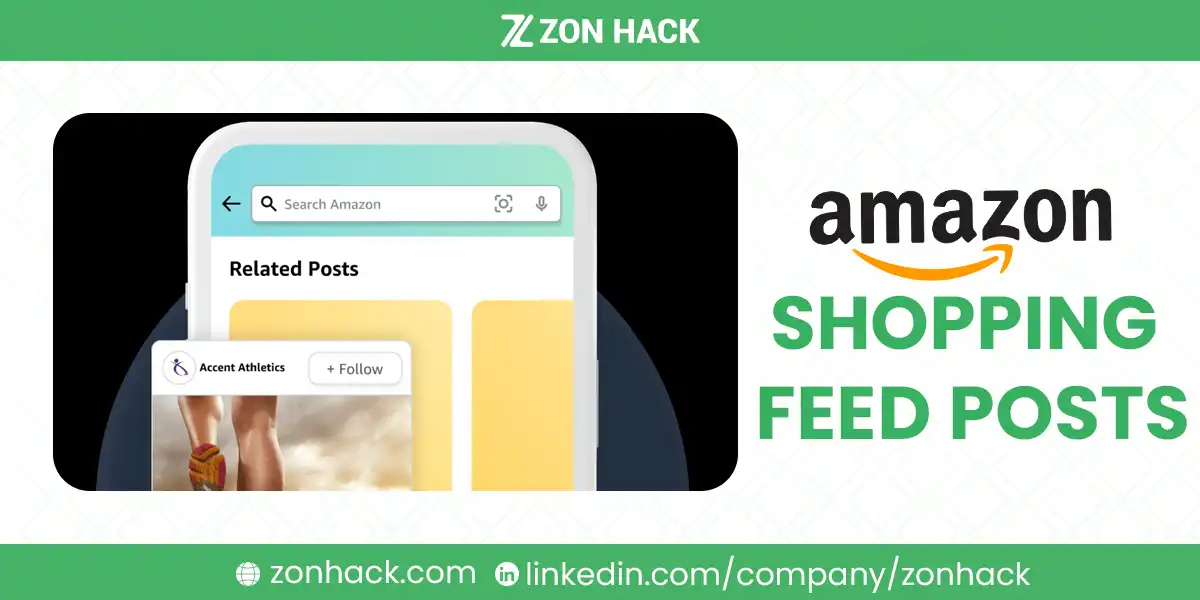If you want to optimize your Amazon marketing efforts, understanding Amazon Shopping Feed Posts is crucial. These posts allow brands to engage with their audience in a visually-driven, social media-like format within the Amazon ecosystem.
In this guide, we’ll walk you through everything from getting started to advanced strategies for maximizing your ROI.
What Are Amazon Posts, and Why Are They Important?
Amazon Posts are a social-media-like feature within Amazon that enables brands to showcase their products through engaging content. Unlike traditional ads, Posts appear organically across various touchpoints of a user’s Amazon shopping journey, such as product detail pages, related product sections, and brand feeds.
The goal of Amazon Posts is to increase brand visibility, drive traffic to product listings, and enhance brand discovery without the hard sell typically associated with Amazon advertising formats like Sponsored Products or Sponsored Brands. Posts are available only to brands enrolled in Amazon’s Brand Registry, and the format offers strong ROI potential through organic engagement.
Key differences between Amazon Posts and other advertising formats:
- Posts: Free to use and appear natively in the shopping experience.
- Sponsored Ads: Paid, targeted ads that appear in search results or product listings.
How Can You Get Started with Amazon Posts?
To start using Amazon Posts, you need to be enrolled in the Amazon Brand Registry. This step is essential, as it allows Amazon to verify your brand ownership and eligibility to use Posts.
Steps to Get Started:
- Sign Up for Brand Registry: You’ll need a registered trademark to qualify.
- Create a Brand Profile: Customize your profile with a strong brand presence, including logos, images, and descriptions.
- Set up an Amazon Posts Account: Use your existing Seller Central or Vendor Central account to access Posts.
- Plan Your Initial Campaign: Think about your target audience, budget, and content style (lifestyle, product-focused, or mixed).
- Budgeting: Though Posts are free, you may want to allocate funds to content creation (e.g., hiring photographers, videographers, or graphic designers).
What Is the Best Content Strategy for Amazon Posts?
Creating an effective content strategy is key to success on Amazon. Posts should be visually appealing, easy to understand, and optimized for both desktop and mobile.
Key Content Types:
Lifestyle Photography: Show your product in real-life settings to create a connection with consumers.
Product Photography: High-quality images that highlight features.
Video Content: Short, engaging videos that demonstrate product usage or benefits.
Content Calendar: Plan posts to align with seasonal events, holidays, or product launches. A calendar helps ensure a consistent flow of posts and maximizes engagement during peak shopping times.
Mobile-First Approach: Since most Amazon users browse on mobile devices, ensure your content looks good on small screens. Prioritize vertical images, and keep text short and scannable.
What Are the Technical Specifications and Requirements for Amazon Posts?
Image Specifications:
- Minimum size: 640 x 640 pixels (1:1 aspect ratio)
- File formats: JPEG or PNG
- File size: Up to 20 MB
Video Specifications:
- Length: Up to 30 seconds
- File formats: MP4 or MOV
- Resolution: 720p minimum
Character Limits:
- Headline: 50 characters max
- Post text: 2200 characters
What Types of Posts Work Best on Amazon?
Amazon offers several post types, each suited to different objectives. Choosing the right format can help optimize performance.
- Standard Image Posts: Great for promoting individual products.
- Video Posts: Ideal for product demonstrations.
- Carousel Posts: Display multiple images in one post to showcase a range of products.
- Collection Posts: Group products by category or theme.
- Seasonal Posts: Tie your content to upcoming holidays or events.
- Brand Story Posts: Share your brand’s unique story and values.
How Can You Write and Optimize Amazon Posts for Maximum Engagement?
Copywriting Best Practices: Keep the copy concise and actionable. Include a clear Call-to-Action (CTA) like “Shop Now” or “Learn More” to guide users towards your product listings.
Keyword Optimization: Use relevant keywords that customers are likely to search for. These can be added to your post’s text and product links to increase discoverability.
A/B Testing: Regularly test different headlines, images, and CTAs to identify which combinations generate the most engagement.
Hashtag Strategy: While hashtags aren’t as critical on Amazon as on social media platforms, they can still help increase post visibility within specific categories.
How Can You Achieve Visual Content Excellence?
The quality of your visual content is crucial to attracting clicks and conversions. Here are some tips for creating effective images and videos for Amazon Posts:
- Photography Guidelines: Use high-resolution images that focus on product details. Incorporate lifestyle images where possible to create emotional appeal.
- Video Tips: Keep videos short and to the point. Highlight key product features early to capture the viewer’s attention.
- Branding Consistency: Ensure your posts match the overall tone and style of your brand, using consistent colors, fonts, and imagery.
- Mobile Optimization: Since many Amazon users browse on mobile, use large fonts and bright visuals that stand out on smaller screens.
How Should You Manage Your Amazon Posts Campaign?
Posting Frequency: Aim for 3–5 posts per week to maintain visibility without overwhelming your audience.
Timing Optimization: Post when your audience is most active. Early mornings or late evenings often work best.
Budget Allocation: Allocate part of your marketing budget for professional content creation (photography, videography, etc.) to ensure your posts stand out.
What Metrics Should You Track for Amazon Posts?
Monitoring performance is essential for optimizing your Amazon Posts strategy. Key metrics to track include:
- Engagement Rate: The percentage of users who interact with your post.
- Click-Through Rate (CTR): The number of clicks on your post compared to impressions.
- Conversion Rate: How many users purchase after clicking on your post.
ROI Calculation: Calculate the cost-effectiveness of your posts by comparing the revenue generated to the cost of content creation.
How Can You Stay Compliant with Amazon’s Policies?
Amazon has strict guidelines when it comes to the content you post. Violating these can lead to your posts being removed or even account suspension.
- Prohibited Content: Avoid misleading claims, explicit content, or anything that violates Amazon’s terms of service.
- Copyright Rules: Ensure you have the rights to use all images, videos, and music in your posts.
- Disclosure Requirements: If working with influencers, ensure all partnerships are disclosed properly.
What Advanced Strategies Can You Use to Boost Amazon Posts Performance?
Once you’ve mastered the basics, consider implementing advanced tactics like:
- Influencer Collaborations: Partner with influencers to create content that reaches a broader audience.
- User-Generated Content: Encourage customers to share their own experiences with your product.
- Cross-Channel Promotion: Promote your Amazon Posts on social media or through email marketing to drive traffic.
FAQ
What is the best time to post on Amazon?
Typically, early mornings and late evenings are the best times to post, as these are peak shopping hours.
Can small businesses use Amazon Posts effectively?
Yes, small businesses can use Amazon Posts to build brand awareness and drive sales without spending money on traditional advertising.
Is there a cost to using Amazon Posts?
Amazon Posts are free to use, but brands should invest in quality content creation.




